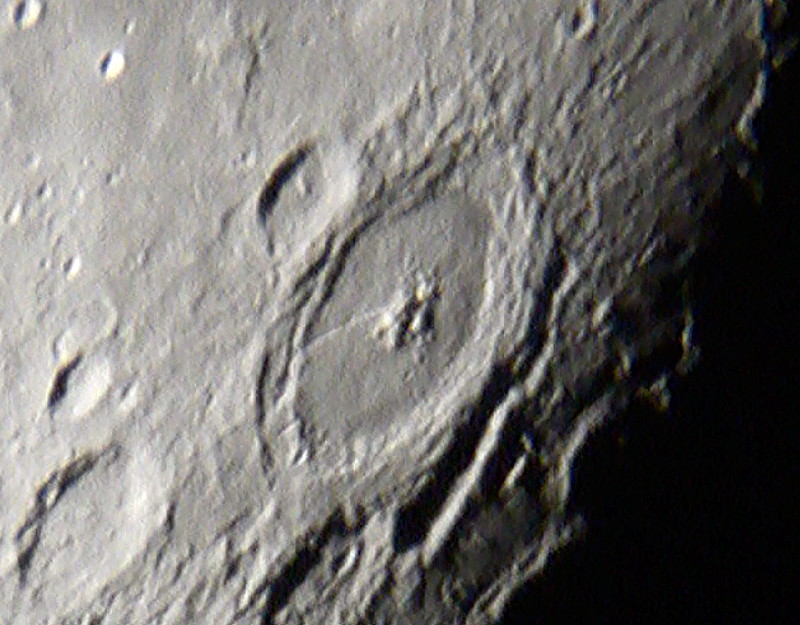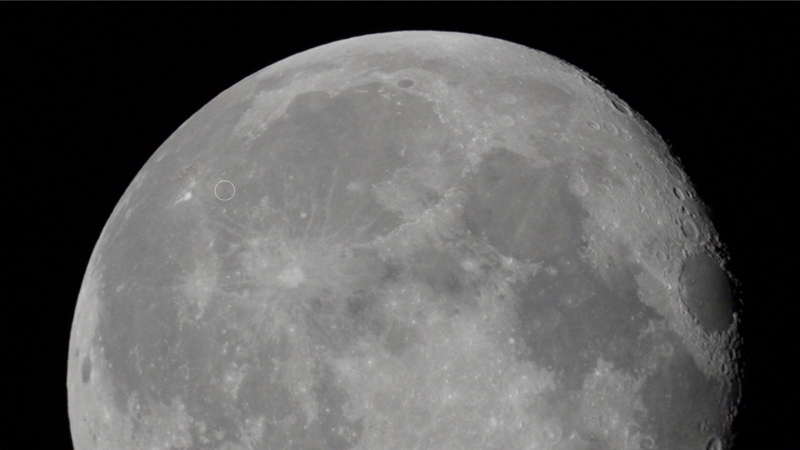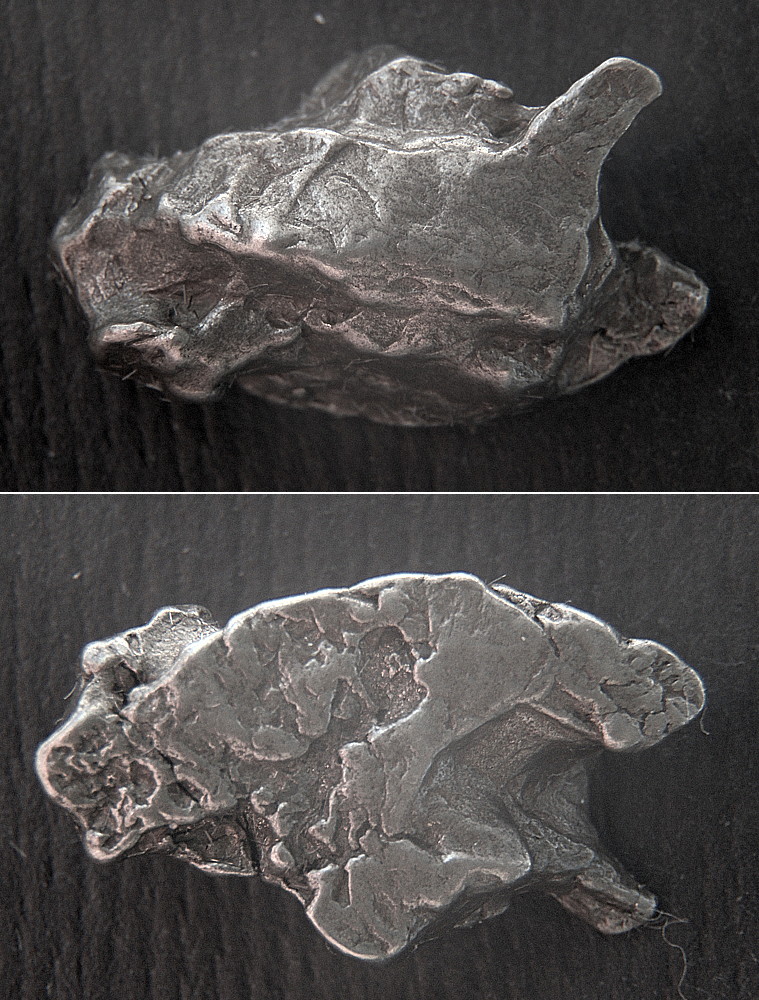
HST-Moon Transit
Posted: 25 June 2013
Clouds came in on Sunday, 23 June 2013; no observing. Missed a good ISS pass. The sky dawned cleared on Monday, 24 June, and although clouds appeared mid-day, the forecast from 7Timer! called for clear skies by 2000 MST. As sunset approached, clouds remained in my skies and the satellite image didn't show much promise for clearing for several hours. The main objective for this night was a transit of the Moon by the Hubble Space Telescope (HST) that would occur at 0137 MST, with the Moon high in the southern sky. This is the HST-Moon transit prediction from CalSky.com:

I had previously captured a HST-Moon transit on 29 April 2013. I was anxious to try again this night. If the clouds cooperated. Sunset looked like this:

The sky began looking pretty good 3 hours before the transit. Cassiopeia Observatory was finally opened at 2333 MST, 76°F. There were still some clouds in the sky, but the southern sky was mostly clear. Viewed Saturn, 83X, at 2340 MST. I then took a quick look at Saturn using 364X.
Next, I did a tour of the lunar terminator using 364X. Crater Petavius was especially nice. Decided to image it.
I then synced the observatory clock to WWV for use during the HST-Moon transit. At 0000 MST, I began setting up for lunar imaging at prime focus of the 8" LX200-ACF telescope. I had to add a focal reducer in order to capture the entire lunar disk.
This is a cropped image taken with the D7000 DSLR, 1/320sec, ISO 100:

I removed the focal reducer and switched to eyepiece projection using a 9mm (222X) eyepiece to image Crater Petavius. This is a single frame cropped from a HD video, 1/100sec, ISO 1600:

At 0037 MST, with one hour to go before the HST-Moon transit, I mounted the D7000 DSLR at prime focus of the 8" telescope. I did a test HD video recording at my selected exposure settings (1/2000sec, ISO 2000). The clouds were still cooperating. About 30 minutes before the transit, I did a focus test on the star Altair using the Bahtinov Mask, and then locked the telescope focus. All was ready for the transit.
I started recording one minute prior to the transit, which was predicted to occur at 013701 MST, and recorded for 2m16s, 1/2000sec, ISO 2000. Just before and after the transit, I watched the sky to see if the HST was visible; it wasn't.
During post-processing, after spending several minutes studying the video, I finally saw that I had indeed captured the Hubble Space Telescope transiting the moon. The previous time I captured the HST transiting moon it was illuminated by the sun. This time, the HST appeared dark. Here are three frames from the HD video with the HST circled:



This image, magnified from the top image above, shows the Hubble Space Telescope:

I uploaded the video to Vimeo, but their compression blurred out the HST. So, here are two raw HD video formats, both 1 second long. The first is a .m4v video file (1.2 MB) for use on iOS devices (and computers). The second is a .mov file (3.9 MB) suitable for full screen viewing on a computer. With both videos you will probably want to download the file to your computer and then step through the video frame-by-frame to best see the HST transiting the moon. Use the still images to see where the HST appears. Remember, it starts on the right side of the moon, crossing (rapidly) to the left.


The observatory was closed at 0153 MST, 72°F.
In May 2013, while in Portland, OR, I purchased a set of Kenko Extension Tubes for my D7000 DSLR from Pro Photo Supply in Portland. I had used extension tubes extensively back in the 1960s and 1970s with my Pentax Spotmatic 35mm camera, but had never got a set for a DSLR. I'm glad I now have an excellent set for my DSLR. I decided to use the extension tubes to update the photo of the meteorite I received from Explore Scientific on 26 December 2012. Here are both sides of the meteorite:

Via Twitter (thanks @halfastro) I learned about the article "Behind the Scenes at Kitt Peak Observatory: What is an Observing Run Really Like?". Definitely worth a read. My own visits to Kitt Peak are documented on my "Observatory Visits" web page. I'm hoping for another special visit to Kitt Peak later this year.
Comments are welcome; use the Comments section below, or you can Email Me. Thanks.
Cassiopeia Observatory Home Page